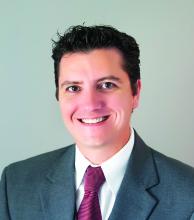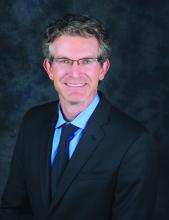Preparing for transition
When Rob Lamberts, MD, left his traditional practice in 2012, there were few leaders in direct primary care and not many resources available.
“I ended up just kind of figuring it out myself,” said Dr. Lamberts, an internist based in Augusta, Ga. “Over the past 6 1/2 years, I’ve built the practice to about 800 patients.”
Today, Dr. Lamberts is highly satisfied with his work and is helping local colleagues set up similar practices. He charges patients between $35 and $70 a month, depending on age, and offers a family fee between $150 and $175 for up to five members. Services include: extended physician access, office visits, discounted in-house labs, and discounted medications dispensed from his office.
“The amount of paperwork I have to do is substantially less,” Dr. Lamberts said. “My income is at least the same, if not a little more. My quality of life is tons better, and the quality of care is so much better.
Before making the jump to direct primary care, do your research and talk to other doctors about their experiences, Dr. Lamberts advised.
One important consideration is what type of direct primary care design to choose – the direct-to-consumer route or the direct-to-employer road. The first model targets patients as members, while the latter contracts with employers to provide services to their employees.
“There has been a surge in amount of interest in direct primary care to employers,” said Michael Tetreault, editor in chief for the DPC Journal, a news source that conducts data analytics on concierge medicine and DPC practices.
Reader surveys conducted by the DPC Journal found that a growing number of DPC physicians are looking to partner with local employers. Of 141 DPC physicians in 2019, 52% expressed an interest in employer partnerships, up from 35% in 2015, according to data provided by Mr. Tetreault.
One example of such growth is Nextera Healthcare, a network that started out with a handful of physicians about 10 years ago and now has more than 50, according to CEO and founder Clint Flanagan, MD.
The network contracts with employers across Colorado and eight other states to provide direct primary care services to their employees. Once affiliated, Nextera operates the marketing, sales, accounting, legal, and development side of the business. Most Nextera physicians have an average of 15 years practice experience, Dr. Flanagan said. Physicians receive most of the monthly revenue generated by their patients; Nextera retains a portion. Dr. Flanagan declined to specify the exact percentage retained.
Attracting patients, starting strong
For Dr. Hsieh, being well known in his community and having built a reputation as a family physician contributed to his success in direct primary care. In addition to taking on leadership roles in the health care community over the years, Dr. Hsieh regularly offers perspective for local media regarding medical topics, plays in a popular band at charity events, and teaches courses at two major universities in the area.



